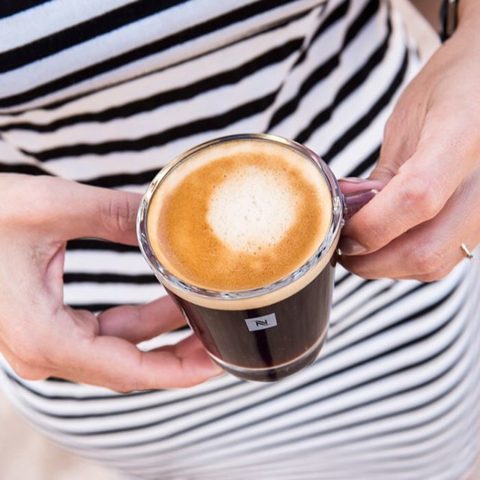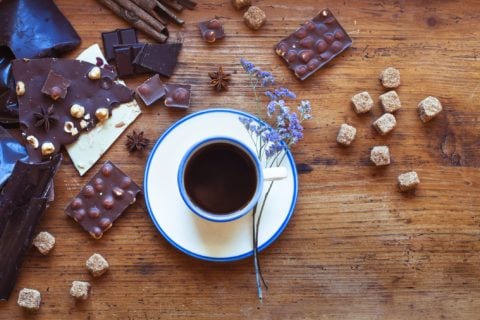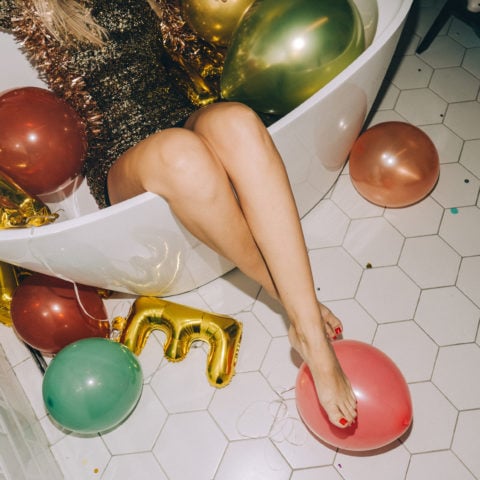The Beginner’s Guide to Hosting a Coffee Tasting Party
It involves A LOT of slurping.
While most of us can agree that wine is one of the greatest gifts on earth, it’s definitely not for everyone. According to research, the number of Canadian millennials abstaining from alcohol is on the rise. Luckily, there’s coffee, which happens to share many of the same characteristics of wine, from the way it’s cultivated to how it’s consumed. The art of coffee tasting (a.k.a. cupping) has also been a trending activity as of late, so we decided to take a closer look at how it’s done.
We meet with Élyse Lambert, a world renowned sommelier (she’s ranked fifth in the world) and Nespresso Canada’s sommelier, at the Nespresso Academy in Montreal. The newly opened space is decked out with sleek training rooms, state-of-the-art equipment and labs solely dedicated to cupping. It’s also only the second Nespresso Academy in the world, right after Paris. “Just like a wine tasting, cupping exposes your senses to understanding what the product is all about,” Lambert explains.

Selecting your coffee
First things first: You’ll need to choose your brews. According to experts, the number of blends being tasted in one sitting should not exceed eight. A good number to start off with would be three or four. When it comes to preparing the coffee, use whichever method you’re most accustomed to. If you have a Nespresso machine, it will definitely come in handy. “You can have one machine with 25 different coffees,” says Lambert. Simply pop in a capsule and let the machine do the work. In terms of timing, every batch of coffee should be served to each guest at the same time.
Figuring out which tools you’ll need
If you’re planning on hosting the cupping at home, you’ll want ensure you have a table that’s large enough to accommodate several cups. As with wine tasting, experts favour Riedel glass, as it’s known to stimulate the senses. If you don’t have these, opt for glass over porcelain—the former is known to be a better insulator than the latter. You will also need spoons, preferably made of silver, Lambert says, as this metal does not alter the taste of the coffee.
Perfecting the slurp
While excellent table manners often entail no slurping, this rule need not apply when coffee tasting. Go nuts, people! Sommeliers actually encourage slurping. Why? “The introduction of the air while you have your liquid creates this process called retro-nasal olfaction,” Lambert explains. “This will allow you to really taste, and that’s why the slurping process is quite important.”
Analyzing the coffee
The first component in the tasting technique is the visual analysis. So stop and take a good look at your coffee. Lambert advises that you look for the crema: the layer of foam that sits atop the coffee. “A good coffee should always have a crema,” she says. If your cup lacks the crema, or it doesn’t appear to be of a fluffy and even consistency, this could mean there’s a problem with your coffee. Achieving a good crema is a combination of bean quality and drip speed, among other factors.
Next up is the olfactory analysis. After you’ve looked at your coffee, stir the liquid with your spoon—this allows the flavours and aromas to be distributed evenly. Bring the cup to your nose and inhale. Breathe in for a few seconds to get a feel for the brew’s aroma.
And finally, the best part: The gustatory and retro-nasal olfactory analysis (a.k.a. drinking the coffee). Things you want to keep in mind once the liquid is in your mouth are its body and texture, how smooth it is, whether or not it tastes bitter and how acidic it is. Also try to pinpoint what flavours you’re tasting. Some notes to look for are fruits (such as pineapple, strawberry and papaya), chocolate, spices (like cinnamon), nuts and liqueur flavours (such as brandy, whisky and sake). Most high-quality coffee packages will tell you what notes to look for.
If you find yourself thinking your tasting session didn’t go as planned the first time around, don’t stress! “What’s important about coffee is pleasure,” says Lambert, explaining that coffee tasting is fundamentally about opening yourself up to a new experience. Yes, there are so many things you need to know about and keep in mind, but at the end of the day, pleasure comes first.








